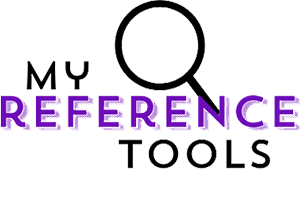The Debate Over “School Choice,” Explained

When it comes to finding the right school for your child, the options can be overwhelming. Public, charter, and private schools each come with their own strengths, challenges, and philosophies. To make the best decision for your family, it’s helpful to understand how these schools differ, how they are funded and governed, and what “school choice” means in this context.
Public Schools
What Are Public Schools?
Public schools are funded by local, state, and federal governments. They are overseen by school districts and must follow guidelines set by the local school board and the state Department of Education.
Key Features:
- Funding: Public schools are funded through taxpayer dollars, which means there’s no cost for families to attend.
- Governance: They are run by the government and follow strict curriculum and testing standards.
- Accessibility: Public schools are open to all students within a specific geographic boundary.
Pros:
- Free education for all students.
- Social diversity, as they serve a broad range of families.
- Accountability to the public through government oversight.
Cons:
- Limited resources, especially in underfunded districts.
- Large class sizes in many areas.
- Limited flexibility in curriculum due to state mandates.
Charter Schools
What Are Charter Schools?
Charter schools are publicly funded but operate independently of the traditional public school system. They are typically managed by nonprofit organizations, private companies, or groups of educators and parents.
Key Features:
- Funding: Like public schools, they are funded by taxpayer dollars, but often receive less funding per student.
- Governance: They operate under a charter, or contract, with a school district or state board, giving them more freedom in curriculum and teaching methods.
- Accessibility: Charter schools are tuition-free, but admission may be limited through lotteries if demand exceeds capacity.
Pros:
- Greater freedom to innovate with teaching styles and curricula.
- Ability to focus on specialized learning approaches, such as STEM or the arts.
- Often smaller class sizes compared to traditional public schools.
Cons:
- Mixed academic performance. Some excel, but others fail to achieve better outcomes than public schools.
- Less accountability. While charters must meet performance goals in their contracts, oversight varies by state.
- Limited enrollment, which may leave some families without access.
Private Schools
What Are Private Schools?
Private schools are funded through tuition fees paid by families, as well as donations and endowments. They operate independently of government oversight, giving them the freedom to design their own curricula and policies.
Key Features:
- Funding: No taxpayer dollars involved. Tuition costs can range widely depending on the school.
- Governance: Managed by private organizations or boards of trustees. They set their own academic standards and rules.
- Accessibility: Admission is selective and can depend on factors like academics, income, or religious affiliation.
Pros:
- Higher degree of flexibility in curriculum and teaching methods.
- Access to specialized programs, extracurriculars, and facilities.
- Smaller student-to-teacher ratios.
Cons:
- Can be prohibitively expensive for many families.
- Limited diversity, depending on the student body and admissions policies.
- Not required to follow public education standards, which may lead to inconsistencies in quality.
Understanding School Choice
“School choice” is the concept that families should have options when it comes to their child’s education. This might involve choosing between public, charter, private, or even homeschooling. Advocates argue that school choice empowers parents to select the best-fit school for their child, leading to better outcomes and competition among schools.
However, critics raise concerns about equity. They argue that school choice can create disparities, lowering funding and support for traditional public schools when students leave for charters or private institutions. There’s also debate over the use of public funds, such as school vouchers, to support private schooling.
Arguments For School Choice:
- Greater opportunity for families to find the right fit for their needs.
- Encourages innovation and competition.
- Can help students escape failing or underperforming schools.
Arguments Against School Choice:
- Can drain funding from traditional public schools, leaving fewer resources for the remaining students.
- Not every family has equal access to choice-based programs, creating inequities.
- Mixed results from alternative school models like charters.
Making the Right Decision
Every school type comes with trade-offs, and the best choice depends on your child’s unique needs, your family’s values, and available options in your area. Visiting schools, asking about their curriculum, and understanding their approach to learning can ensure your decision is informed and thoughtful.
No matter the choice, what matters most is that your child thrives in an environment that supports their growth and prepares them for the future. By fully understanding your options, you can feel confident in finding the school that’s the right fit.
Resources:
-
School Choice: Arguments For and Against – A detailed paper exploring the debates around school choice, including academic and socioeconomic impacts.
-
Comparing: Charter Schools vs. Public vs. Private School – A comparison of the differences, pros, and cons of each school type to help families make informed decisions.







